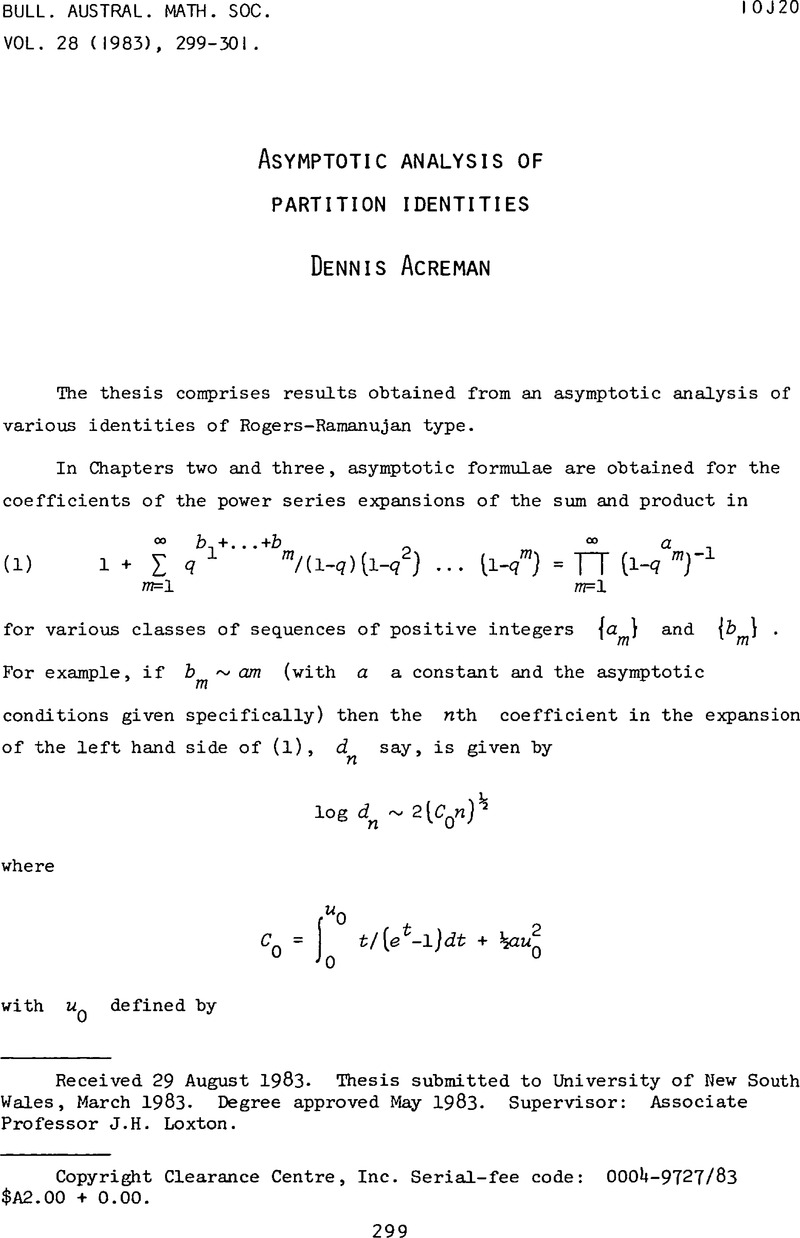Crossref Citations
This article has been cited by the following publications. This list is generated based on data provided by Crossref.
Blecksmith, Richard
Brillhart, John
and
Gerst, Irving
1986.
A computer-assisted investigation of Ramanujan pairs.
Mathematics of Computation,
Vol. 46,
Issue. 174,
p.
731.


